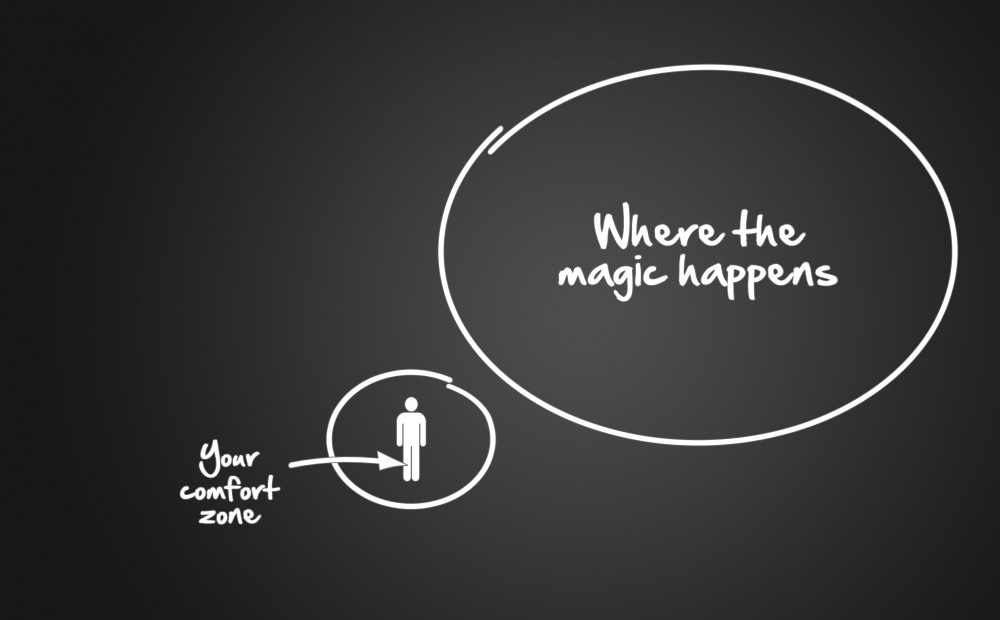One of the biggest challenges companies face today is digital transformation. One of the most important parts of this process is the methodical transition towards an agile mode.
Agile is changing the way a lot of companies work and allowing them to get better results. The main reason for this improvement is that Agile focuses on the areas that bring value to the company. In order to achieve it you must have patience, persistence and courage.
It is never easy to make changes, normally they create anxiety and it’s complicated to change the way people normally work. For this task there isn’t a magical solution, we only can observe, examine and adapt. However, thanks to our experience, we can give both advice and ideas so that this process is successful without being traumatic.

We want to be like Spotify! Be careful with this view on Agile. Spotify works because conditions are suitable for them, but every company is different. Spotify was created with this culture and it has evolved according to its environment and needs. It’s very different to talk about companies that started with waterfall and want to change to Agile. We can learn a lot of tools and techniques from companies like Spotify that we can try in our companies and see if they work, but Spotify isn’t a guaranteed formula for success that every company should follow.
An example of this are the ‘guilds’ used in Spotify as mechanisms for knowledge to flow within the company. Communities are a tool that in another context end up turning into ‘departments’ and which go against the idea of ‘’ a united team working on a product’’, the employees end up thinking more about their department than about their team.
Where do we start? The first thing you have to do is to get a sponsor who finances the change. A transformation like this requires you to hold a card to play when friction starts to appear. In order for the management to finance the project it is ideal to look for a trainer or coach that teaches them the required changes needed in order to adapt to Agile.
Companies that have faced the challenge of introducing Agile in their businesses from the bottom and without enough support have suffered to the point of having to give up. The main problem is that work frames such as Scrum question traditional ways of doing things. The way that we have always been taught to do them!
For example, how many Gantt diagrams have we seen gotten right? In our case none. So, why do we have people whose only job is to update them? These issues can be seen clearly when you start from the bottom, these are things that most of us have already seen, and there is a lack of productiveness all around us.
That’s why, when you start from the bottom normally you see rapid improvements. The difficulties start appearing when the project interacts with other areas, and above all when we arrive to a certain hierarchical level. In that moment middle management usually appears asking us for a Gantt diagram or asking why we are doing things in a different way. It’s then when we must play our sponsor support card and if we don’t have one we will possible have to abandon the project.
When you give up on transformation it actually creates double the frustration for the people who started the process. On the one hand, they feel the disappointment of having to return to doing things as before while knowing it is not productive; secondly, they get a feeling of failure when they know there is a better way of doing things but they can’t continue down that road. Because of this it’s fundamental to have the total support from everyone before starting the process.
The next step is to make a plan. A plan? Yes, in Agile it’s important to have a plan. The difference between it and waterfall is that we presume plans fail, and that’s why we make them simple so that they serve as a guide in order to know where we want to go and to prevent a dependency on external factors. The time to transform a company depends on its size but it’s not unusual that the process lasts years, it’s better to be patient than to take the wrong steps.
How do we build and agile plan? There are various ways of doing it. It’s very useful to have a physical white board. There are a lot of digital tools that can help you, but a white board gets a person’s attention more and it’s also helpful as a marketing tool for what is to come in the future.
Besides, being able to physically see the process of our projects is the best way of starting a day and of knowing what exact stage of the process we are currently at and what we still have to achieve. The final advantage is that it improves transparency, one of the key values that both Scrum and Kanban need in order to work and improve the company’s maturity.
The board can be used in several ways. Ideally we should write initiatives that we are going to start in Agile or departments that are going to be transformed. Using post-its we put up the names of certain projects and in which months we believe we are going to start them.

What departments or teams do we start with? When a change occurs in a company, there will always be people in favor of change, others who will be indifferent and finally those who oppose to it. It’s important to identify people willing to change their way of working and rely on them, especially at the beginning. The rest will end up to moving towards change. The ideal situation is to start with a team that will be the first to work in an Agile way and that will become an example for the rest of the company.
Once we’ve decided where to start, the change comes into effect. Ideally we should use training as a chance to publicize change. Having the support of an Agile Coach or a Trainer in Agile (Scrum, Kanban, etc.) will be the key to teach people. Another idea that we could use is to invest in training some team members to be certified Scrum Masters, Product Owners or in Scrum development tools.
There are some techniques that we can implement in new teams. One of them is that the team writes down everything they do in their normal working day that they consider is not productive. This isn't just used for us to complain, but rather to evaluate how we were working until now and to see which activities we should not repeat again. We have to stop doing anything that isn't productive and remove it from a daily working routine.
A technique that we can use for projects that are stuck for months in the paperwork and planning stage and are not able to start is: to create an event where everyone involved in the project has to make a document consisting of all the material that they feel is important.
Afterwards all of us together select the paragraphs or parts of the documents that we believe are truly important and we then eliminate the rest. The selected parts are then printed and put up on the walls in order to prioritize the selected parts in order to be able to start as soon as possible.
Once this first team or department starts transforming and learning how to work, it’s time to spread knowledge. There is a technique that works pretty well which is to split a team once they have finished a Scrum project and place people in different teams. The idea is to spread knowledge to other teams and get the viral factor. In this way, little by little, we will learn how to work in agile and change will become visible and real.
Another frequently used technique is to get each team to be as transparent as possible. We have been able to see this in some clients where a team started working and those close to it saw that those people could leave on time, were being complemented, and were productive and happy. I, too, want that in my project!
And now what? It is important to follow up the plan, see what stage change is in and above all measure it. Measuring change will help us to make decisions that support transformation and favor continuous improvement. One way of studying the state of Scrum is to use tools like the Checklist of Kniver. This checklist measures the state of Scrum in a team and when applied in many teams it can give us a useful KPI.
Once change starts bringing results and improvement becomes evident, it will be difficult to go back, so we might have to make changes in our organization. This restructuring isn’t easy and sometimes requires a clear relocation or transformation strategy to helps us.
Some companies realize that frameworks such as Scrum or Kanban don’t really fit and they end up creating their own Agile methods. Thanks to the transparency philosophy encouraged by Agile, this type of companies usually attend events to spread the word so that other companies can benefit from new ideas. Besides, it’s a good way of creating your new way of doing things which in the end benefits the image of your brand.
Transformations are complicated, but if we don’t transform we will become obsolete, change is necessary and turning our backs on it will only make us less competitive. Let’s adapt to change, to competition, to our clients; only that way will we survive in a more and more demanding and aggressive market. LET’S EMBRACE CHANGE!
Comments are moderated and will only be visible if they add to the discussion in a constructive way. If you disagree with a point, please, be polite.




Tell us what you think.